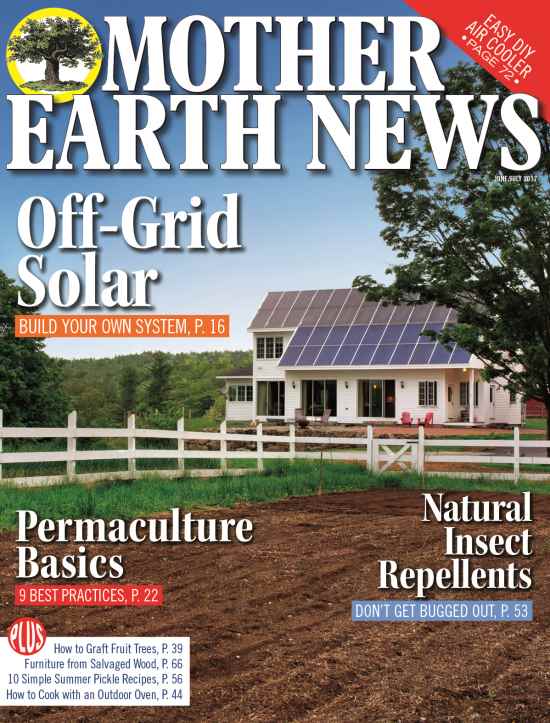If you live on a homestead, it’s probably safe to say you’re the do-it-yourself type of bride. This means homemade centerpieces, decorations, signage

But what about the flowers? Wedding bouquets are almost always purchased directly from a florist, even for DIY brides. But who says you can’t grow your own flowers for your wedding? If you have a green thumb or trying to cut back your wedding budget, growing flowers is an adventurous way to add a personal touch to your wedding bouquet.
If you’re looking to plant a flower garden on your homestead to grow your own wedding flowers — or to sell to other blooming brides — here are some tips to get you growing.
1. Decide Which Types of Flowers You Want to Grow
Planning is critical when it comes to growing wedding flowers. Depending on the types of flower you want, it may be necessary to start one to three years out from the actual wedding. This length of time will allow shrubs like roses and perennials like daisies to have time to mature and produce an adequate number of blooms to fill fresh bouquets.
Think about the varieties of flower you’d like to grow, plus how many flowers you’d like to feature — both in your bridal bouquet, the centerpieces and other decorations. Make a list of everything you’ll need flowers for and want to grow yourself. This includes bouquets, boutonnieres, centerpieces and anywhere else you want your flowers to provide a pop of color. Consider the size and colors of the blooms to ensure they match your wedding colors and overall theme.

Popular flowers that grow well and look great in bouquets include:
- Black-eyed Susans
- Dahlias
- Hydrangeas
- Lilacs
- Poppies
- Roses
- Shasta daisies
- Sunflowers
- Sweet peas
- Tulips
- Zinnias
Once you have an idea of what you want to grow, you’ll need to plan accordingly for the time of year in which the flowers will bloom, how long it takes each flower to mature and how many flowers each plant typically produces.
2. Prepare Your Flower Beds
Begin planning your beds in the fall — if planting bulbs — and winter months, so you’re ready to hit the ground running come spring. Depending on your growing season and the types of flowers you plant, you may need to sprout your seeds indoors and transplant them when the ground gets soft and warm.
For your beds, pick a spacious spot that gets plenty of sunlight, as most flowers require at least six hours of sun per day. Find good soil and use compost. If you’re going with what’s already on the ground, test the soil to see if it requires additional nutrients and supplement as needed.
When planting, follow the care instructions that come with the seeds or bulbs you’re using. This will tell you how deep to plant the seeds and how far apart to plant for proper growth.
3. Water Faithfully!
This may seem like a no-brainer, but it’s of the utmost importance to provide adequate irrigation when you grow wedding flowers. If a plant is stressed, due to excessive heat and not enough water, it can delay when it blooms. If it’s thirsty, it may completely abort or fail to grow buds altogether.
On the other hand, over-watering can also cause issues for your blooms, such as fungus-covered petals or rotted buds.
Your plants must receive consistent irrigation, particularly when they’re young, to ensure that your flowers grow their best blooms.

4. Keep These Simple Tips and Tricks in Mind
When it comes to growing your own wedding flowers, the process will be rewarding, but also labor-intensive and possibly stressful. Since you live on a homestead, you’re more suited to put in the labor and commitment it will take. Here are a few more tips to keep your flowers growing their best.
- Prepare for the worst — No one wants to think about all the terrible things that may happen to their delicate blossoms leading up to their wedding, but it’s best to prepare for anything! Over-plant to ensure you have plenty of flowers, even if the deer devour a few blooms.
- Beat blossoms that come too soon — If your flowers begin to bloom too early, simply remove the buds.
- Create bigger blooms on single stems — Some flowers can be coaxed to create larger blossoms if you remove any side shoots that would otherwise compete for the plant’s nutrients.
- Feed your flowers — Give your flowers extra nutrients by fertilizing regularly. About a month before the wedding, switch to a bloom-boosting blend.
If you’ve never planted a flower garden, growing flowers for a wedding might not be a great place to start experimenting. That being said, you can always consider going with a florist for your bridal and bridesmaids bouquets and using your own blooms for the rest of your flower needs.
Get Your Wedding Flowers Blooming
You don’t have to own a greenhouse or be a florist to grow your own wedding flowers and create beautiful arrangements for bouquets, centerpieces and more. All you need is a little planning and dedication, plus creativity and an eye for beauty.
Kacey Bradley is the blogger behind The Drifter Collective, an eclectic lifestyle blog that expresses various forms of style through the influence of culture and the world around us. Along with writing for her blog, she has written for sites like U.S. News, SUCCESS, Guides for Brides, Hotel Online and more!
Follow Kacey on Twitter and subscribe to her blog to keep up with her travels and inspiring posts!










